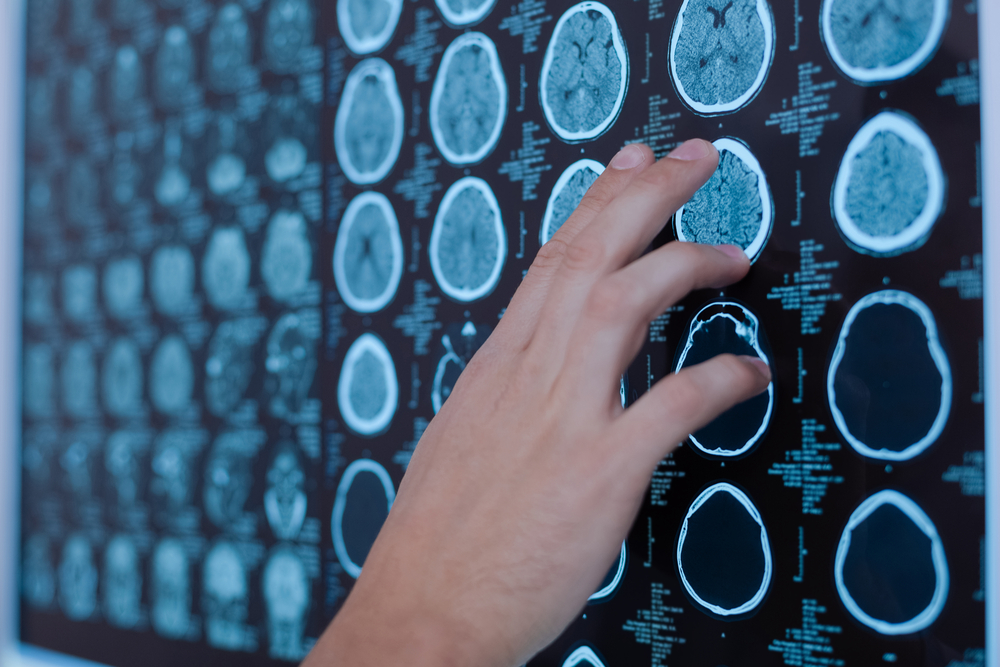Iron Levels in Brain May Predict Parkinson’s Severity and Cognitive Decline, Study Finds

Likely cognitive decline, dementia risk, and the severity of motor symptoms in Parkinson’s disease might be tracked by measuring the amount of iron content in the brain, a study reports.
These finding were described in the study “Brain iron deposition is linked with cognitive severity in Parkinson’s disease,” published in the Journal of Neurology, Neurosurgery and Psychiatry. The work was developed at University College London (UCL).
A link between iron buildup, and both natural aging and neurodegenerative disorders like Parkinson’s, has been established in several studies. Apart from loss of dopamine-producing neurons, Parkinson’s is characterized by pronounced iron accumulation in two brain regions, the globus pallidus and the substantia nigra.
“Iron in the brain is of growing interest to people researching neurodegenerative diseases such as Parkinson’s and dementias,” Rimona Weil, the study lead author, said in a press release. “As you get older, iron accumulates in the brain, but it’s also linked to the build-up of harmful brain proteins, so we’re starting to find evidence that it could be useful in monitoring disease progression, and potentially even in diagnostics.”
About 50% all of Parkinson’s patients develop dementia as their disease progresses, the study noted. This seems to be preceded by mild cognitive impairment, but measures to accurately track cognitive changes in Parkinson’s are few.
To evaluate if changes in iron levels in the brain relate to cognitive changes in Parkinson’s patients, researchers used a cutting-edge magnetic resonance imaging (MRI) technique called quantitative susceptibility mapping (QSM). QSM can easily detect variations in the content of brain iron, and in other substances such as fats or calcium.
A total of 100 people (52 men and 48 women; mean age, 64.5) with early to mid-stage Parkinson’s and no evidence of dementia, and 37 age-matched people without the disease serving as controls (16 men and 21 women; mean age, 66.1) were enrolled.
All underwent a QSM exam and had their cognitive skills assessed using the Montreal Cognitive Assessment (MoCA), a validated algorithm to assess the risk of cognitive decline in Parkinson’s.
Motor skills were also assessed using the Movement Disorders Society Unified Parkinson’s Disease Rating Scale part 3 (UPDRS-III), as were patients’ visuoperceptual abilities.
“Visual changes are also emerging as early markers of cognitive change in PD. Whether structural brain changes are more strongly linked with clinical risk scores or visual deficits before onset of dementia is not yet known,” the researchers wrote.
QSM exams found higher iron content in brain tissue of the prefrontal cortex and putamen of Parkinson’s patients compared to controls. The prefrontal cortex is involved in planning complex cognitive behavior and in personality expression and decision-making, while the putamen regulates body movement and influences learning.
Higher brain iron levels in the hippocampus (a region involved in learning and memory), and in the thalamus (involved in sensory signaling, motor activity and memory) were found to associate with poorer memory and thinking scores on MoCA.
Poorer visual function and higher dementia risk scores were related to greater QSM changes in three brain regions: the parietal, frontal and medial occipital cortices.
Poorer motor function also correlated with higher iron content in the putamen (a brain region involved in motor control), suggesting a more advanced disease stage. There were no signs of brain atrophy in either study group.
“[W]hole brain measures of iron content can be used to probe key clinical indices of disease activity, with cognitive performance related to hippocampal changes, dementia risk linked to increased brain iron in parietal and frontal cortices and motor severity co-varying with raised brain iron levels in the putamen,” the researchers wrote.
“Our results show that iron in the PD brain has an important relationship with clinical severity,” they concluded, as “[b]ehavioural changes, captured by clinical measures, often occur before consistent [brain] atrophy is seen.”
“It’s really promising to see measures like this which can potentially track the varying progression of Parkinson’s disease, as it could help clinicians devise better treatment plans for people based on how their condition manifests,” said George Thomas, a PhD student and the study’s first author.
Weil’s team is now following study participants to see how their disease progresses, and whether symptoms they develop, like dementia, correlate with measures of iron content in the brain.






